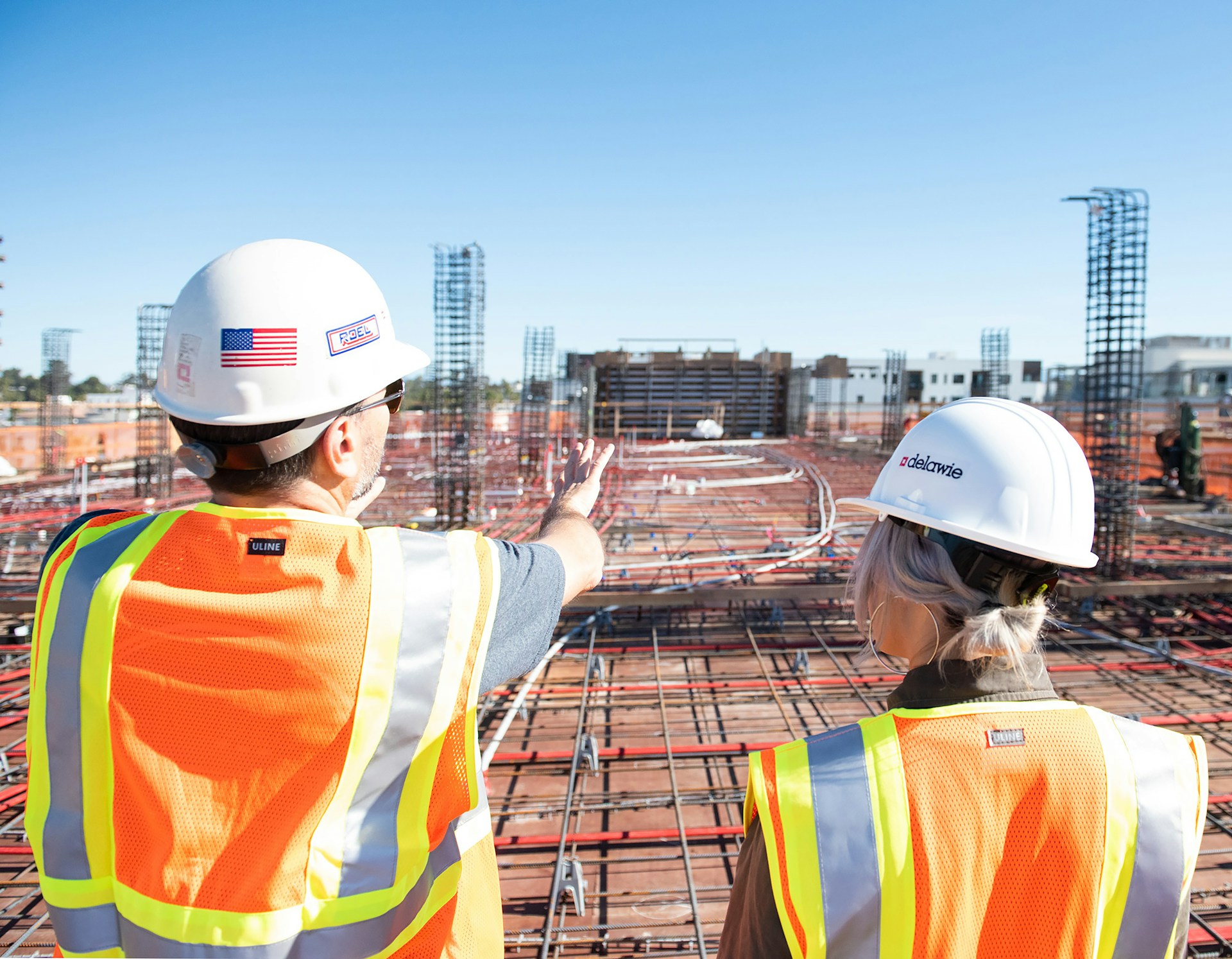Construction projects are complex, regardless of their size and scale. Site managers have demanding roles to play because there is a lot they need to look after, from people to material, designs, processes, and technologies. Their job involves constant construction site monitoring throughout the project to ensure that everything is on track. They also need to manage every single aspect of projects seamlessly.
While an in-depth knowledge of the processes and people management skills matter, they cannot help alone. Technology is the key to ease their job, as they can use high-end software applications to increase workflow efficiencies, reduce costs, and enhance quality. Additionally, everything boils down to having the right strategies in place. Here are the ones that can help managers do their best.
Strategy #1: Implement the latest management tools
70% of construction contractors believe that innovative technologies can boost productivity (78%), enhance safety (79%), and improve schedule (75%). – USG + U.S. Chamber of Commerce
A project manager needs to have hands-on experience to ensure that the design and operational requirements are fulfilled. But it is only half the work done right now, as they have to do a lot. From gathering data to construction site inspections and sharing detailed project reports with senior management, their tasks are endless. It isn’t humanly possible to handle them all and do it perfectly. The best strategy is to implement the latest construction project management platforms to reduce the workload by automating tasks.
The right tools are capable of driving efficiencies and ensuring completion within budget and timelines. Cloud-based software makes the best choice as they enable instant access to complete data for better collaboration. Businesses should also look for one that is easy to use so that there aren’t any barriers to adoption and everyone in the team is more than happy to switch to the new technology.
Strategy #2: Plan for contingencies
Just 25% of construction projects came within 10% of the original deadlines in the past three years.- KPMG
The industry is unpredictable, and even the best managers can go wrong with their projects. Planning for contingencies is, therefore, not a choice for businesses. A typical site has too much work to be completed in too little time. The margins for error are slim, as even the smallest one can topple projects. Planning keeps project managers ahead, but they still need to expect the unexpected.
They may have to face a sudden spell of bad weather, a last-moment change order, or an issue with design or material. Such contingencies can delay the project or affect the budget. It is best to have margins for such situations in the original plans so that managers can easily compensate for delays or cost overruns. Consistent construction site monitoring enables them to stay ahead of emergencies and address the issues at the earliest.
Strategy #3: Embrace a flexible approach
Large projects typically take 20% longer to finish than scheduled and are up to 80% over budget.– McKinsey Global Institute
Considering that things are likely to go haywire on projects more often than not, it managers must embrace a flexible approach. Agility is the key because it makes one capable of dealing with the issues just when they come and change the project course whenever there is a need.
Transparency and collaboration foster an undisrupted workflow, even when projects witness massive changes. It is best to have a construction management software platform that enables transparent communication and collaboration within the team. When the manager makes changes in the strategic plan, they can share the information on the platform. So everyone in the team will be on the same page.
Strategy #4: Build a culture of collaboration
60% of construction contractors see problems with communication and coordination between team members and quality issues with contract documents as the main contributors to lower labour productivity.- Autodesk & Dodge Data & Analytics
Managers need to realize that construction project management is as much about managing people as anything else. But they may often overlook people when caught up in issues related to quality, cost, and time. While these concerns are critical, collaboration and communication between people deserve all the attention managers can give. It not only drives efficiencies and quality standards but also motivates people to give their best.
The site manager has to act like a leader who sets the vision for the project and ensures that everyone else in the team shares that vision. Each person on board must understand their role and go the extra mile to fulfil it. They should also be accountable for their work, which will reduce the workload of the manager to a significant extent. Rather than micromanaging workers, they can take the responsibility of periodic construction site inspections only.
Strategy #5: Prioritize digital transformation
The construction industry is amongst the least digitized industries.- McKinsey Global Institute
Since the industry is far behind others in terms of digitization, businesses need to do everything possible to adopt the latest technologies at the earliest. Fortunately, there are plenty of opportunities out there. They can start by embracing construction management software to automate the entire process and bring speed and efficiency into projects. Technologies like drone monitoring, augmented reality, Artificial Intelligence, and smart safety are emerging as game-changers.
Adopting these technologies can help businesses take quality and productivity to the next level. It is time for them to evaluate the current construction management workflows and identify the gaps therein. Further, they can look for the right digital tools to reduce or eliminate the bottlenecks. While it may take some investment, it is worthwhile because it creates a more productive team and successful projects.
Conclusion
These actionable strategies can take a construction business on the right track and make it future-ready, considering that they hinge on technology. At the same time, they can also help in building a more productive and satisfied workforce that will be ready to add value to the projects and business as a whole.




